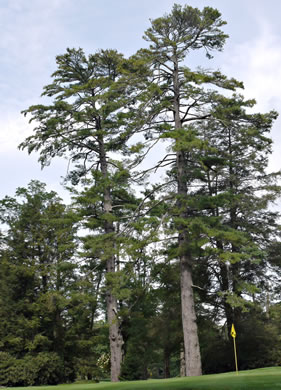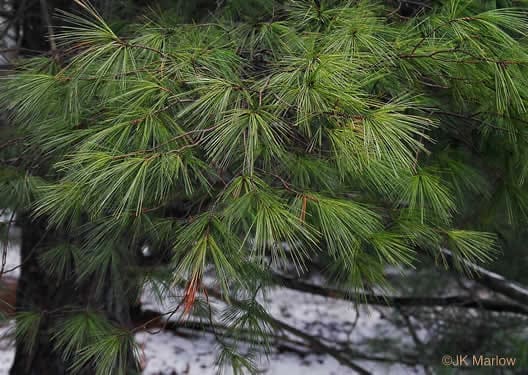Pinaceae
eastern white pine
Pinus strobus
Synonyms
Strobus strobus
Plant Type
Large Tree (greater than 25 ft)
Life Cycle
Perennial
Typical Size
50-80 ft. tall
20-40 ft. wide
Tolerant of
Drought
Inolerant of
Poorly Drained Soil
Propagation
By seed
Plant Propagation Notes
Cold moist stratify seeds for 60 days.
Plant Planting Notes
Provide up to 40 ft spacing.
Plants/Diseases
Susceptible to several pathogens and insect issues, such as blight, canker, rust, white pine weevil, bark beetles, and white pine shoot borer among others. White pine blister rust is usually fatal.
Wildlife Benefits
Host plant for butterfly larvae, Fruit/seeds for birds
Leaves
Typically five needles per fascicle, flexible and smooth; 3-6 inches long
Flowers
Male strobili are yellow. Female strobili are green with a bit of red.
Fruit
Cones cylindrical, brown, and resinous.
Bark
Deeply furrowed, dark brown, red, or grey bark.
Toxicity
No known toxicity.

USDA Hardiness Zones
3, 4, 5, 6, 7, 8
Light Exposure
Full Sun, Part Sun/Shade
Soil Moisture
Dry, Medium
Soil Drainage
Well-drained
Soil pH
Acidic (less than 6.0)
Native in South Carolina?
Yes
Plant Native Habitat
Usually dry, but sometimes moist forests, rocky ridges, and humid gorges.
Global Conservation Status (NatureServe)
Secure (G5)
Federal Conservation Status (USFWS)
Not Listed
Distribution Notes
Extremely rare and not native to the South Carolina coastal plain or sandhills. Rare in the piedmont. Common in the mountains.



